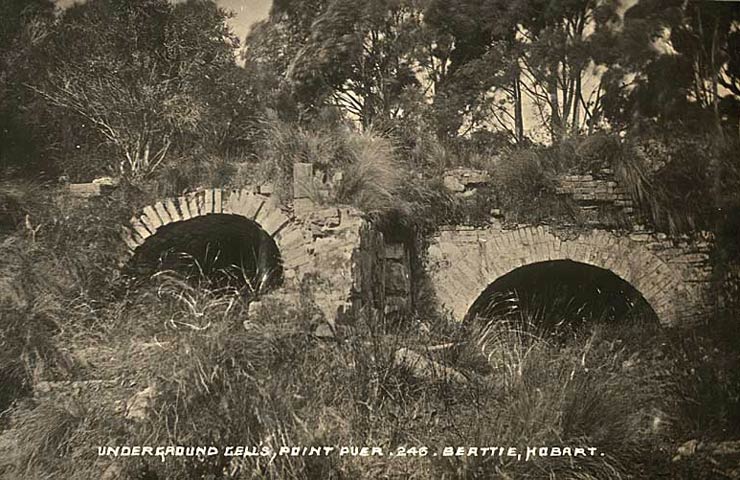 'Underground cells, Point Puer', c1911-15
'Underground cells, Point Puer', c1911-15
TLF ID R3578
This is a sepia-toned black-and-white photograph (3.4 cm x 8.6 cm) showing the entrance to two cells of the former Point Puer Boys' Prison in Tasmania. The entrances are brick archways built into the side of a hill and are surrounded by bushland; there are numerous trees behind the brick structures. Text at the base of the image reads 'UNDERGROUND CELLS, POINT PUER. 246. BEATTIE, HOBART'.
